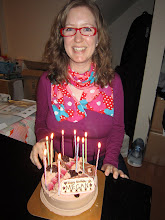I want to teach my elementary school students to play "rock, paper, scissors" tomorrow.
If you don't live in Japan, you're probably wondering why I would want to do that! If you do live in Japan, you already know that "janken" (the Japanese name) is an integral part of the society! Japanese kids janken numerous times throughout the day; for fun, to form teams, and they also use it to solve disputes or make decisions. Often janken is done in large groups.
For example, a whole class full of children can form two groups, or decide a winner through janken. That's been the hardest part of janken for me to understand. How do they do it? They're all just "janken-ing" rapidly and I can't tell what's going on, then all of a sudden, teams are formed, problem solved.
My JTE (Japanese teacher of English) called over a group of students today and tried to explain it to me through example.
It seems that everyone in the group has to be one of two things, otherwise it's a draw. So, if rock, paper and scissors all are represented, it's a draw and they janken again. But if everyone is either rock or paper, then all the winners (in this case paper) form a group and just wait, while the rest of the kids keep janken-ing.
It made a little more sense after I saw it, but it still goes way to fast and it takes the kids so little time to compute everyone's status that I really can't keep up!
I suppose it doesn't matter in the end, because the kids know what's going on. All I'll have to do is keep forcing them to do it in English, and we can play massive games of rock, paper, scissors for as long as I want!
Stan told me recently that he saw a piece on TV about janken variations all around Japan. It sounded like it gets even more complicated than the version I usually see in Mie!
Subscribe to:
Post Comments (Atom)




1 comment:
I wish I remembered some of those janken variations in more detail. That show listed a lot of different phrases used within the different prefectures in Japan.
Post a Comment